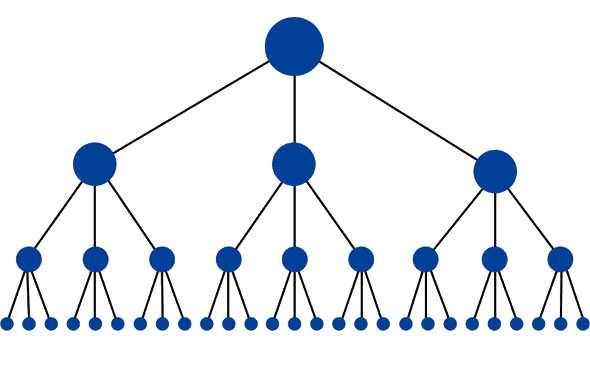
Google’s algorithms are built a bit like the human brain. They connect, associate, and form patterns. When your blog posts link to each other, it’s like you’re telling Google, “Hey, these ideas belong together, don’t miss the full picture.” This psychological nudge shapes how your content is crawled, ranked, and ultimately loved by search engines.
So let’s unpack the SEO benefits of post interlinking through the lens of Google psychology, simple, powerful, and surprisingly human.
Why Google Loves Internal Linking (The Psychology Behind It)
Think about human behaviour: when someone recommends a friend or introduces you to a new colleague, you automatically transfer a bit of trust. Google works the same way.
When Post A links to Post B, Google reads it as a signal of relevance and importance. It says, “This isn’t a lonely island, it’s connected to a bigger world of ideas.”
For readers, links reduce friction. They don’t have to hunt for related info, it’s served on a platter.
For Google, links provide context. If your blog post on “SEO for therapists” links naturally to “keyword strategies for psychologists,” Google gets a clearer picture of your niche authority.
The psychology trick? Internal links mimic how people form memories: one thought leads to another, creating networks. The stronger the network, the easier recall becomes. For Google, that means better indexing and stronger rankings.Core SEO Benefits of Post Interlinking
So what exactly do you gain? Quite a lot, actually.
1. Better Crawlability and Indexing
Google’s bots aren’t magical, they need roads. Internal links are those roads. Without them, bots may miss key content, no matter how brilliant it is.
2. Authority Distribution (a.k.a. Link Juice)
Your homepage might get the most backlinks, but through interlinking, that “juice” flows down to inner posts. Suddenly, even a three-month-old article can climb up SERPs because it’s part of the family.
3. Improved User Experience
When readers find relevant links, they stick around longer. That boosts dwell time and slashes bounce rate, two metrics Google quietly pays attention to.
4. Semantic SEO Context
Google no longer matches exact keywords only, it looks at topic relevance. Linking posts around related ideas builds topic clusters that scream authority.

How Internal Linking Differs from External Linking
A common question pops up: “Does external linking help SEO?” Yes, but it plays a different role.
Internal links: Shape site structure, pass authority between your own pages, and guide crawlers.
External links: Point to trusted sources, showing Google you’ve done your homework and aren’t an island of random claims.
Think of it like a dinner party. Internal linking is introducing guests within your own house (your site). External linking is giving credit to the chefs down the street who inspired your recipe. Both add value, but in unique ways.
The 3 C’s of SEO Applied to Interlinking
You’ve probably heard about the 3 C’s of SEO: Content, Context, and Connection. Interlinking is where they all shake hands.
Content: Your posts need substance first. Empty pages can’t link to each other meaningfully.
Context: Anchor text should make sense. Linking “read more about panda care” to a post about WordPress hosting? Yeah, that’s a no.
Connection: Smart linking creates pathways. A therapist writing on “managing stress” connects to “how sleep impacts mental health,” and boom, Google sees a rich ecosystem.
Best Practices for Smart Interlinking
Here’s where many bloggers slip. Interlinking is powerful, but only when done right.
Anchor Text Matters
Use descriptive text. Instead of “click here,” go for “check our guide on keyword research.” It tells readers and Google what to expect.
How Many Links Per Page?
There’s no magic number, but SEO experts suggest 5–10 internal links per 1,000 words. Keep it natural, if it feels forced, it probably is.
Tools Can Help
Plugins like Yoast SEO or Rank Math highlight orphan posts (those sad little articles with no links). Always go back and give them some love.
Update Old Content
Don’t just link forward. Go back and connect older posts with newer ones. Google crawlers will happily re-discover your archives.
Creative Examples: SEO for Therapists & Psychologists
Let’s apply this to a niche: SEO for therapists.
Imagine a psychology blog:
One article covers “Cognitive Behavioural Therapy (CBT) Basics.”
Another dives into “How Anxiety Impacts Daily Life.”
A third explains “10 Sleep Tips Backed by Psychology.”
If these three posts link to each other naturally, here’s what happens:
Readers exploring anxiety can flow to solutions (CBT), then to lifestyle impacts (sleep).
Google sees a clear topical cluster around mental health authority.
Over time, the site earns more trust for searches like “SEO keywords for mental health” or “therapist marketing tips.”
That’s Google psychology in play: connections strengthen perceived expertise.
Cross Linking, Hubspot Advice, and Real-World Cases
Ever noticed how Hubspot feels like a labyrinth of marketing wisdom? That’s by design. Their blog posts are woven with cross links, leading you down paths you didn’t plan, but you love it.
Cross linking, adding links between related posts, ensures no article is left behind. It’s like a spiderweb. Pull on one thread, and the whole web vibrates.
Pro tip: create pillar posts (big guides) and link smaller, niche posts back to them. This hub-and-spoke model is Google gold.
Common Mistakes to Avoid
Not all interlinking is smart. Here’s what not to do:
Overstuffing Links: 50 blue links in one post? Readers will bounce. Google too.
Irrelevant Links: If the connection feels forced, you’re better off skipping it.
No Follow vs Follow Confusion: Internal links should almost always be “dofollow.”
Ignoring Orphan Content: Posts without any internal links rot in silence.
Quick Checklist for Bloggers
Before you hit publish, ask:
Have I linked to at least 2–3 related posts?
Did I use natural anchor text?
Did I avoid overloading the reader?
Have I updated old posts to link back here?
Is this building a topic cluster?
Are external links balanced and credible?
Does every link make sense for the reader journey?
So, The Invisible Web Google Rewards
Here’s the magic of post interlinking: it’s invisible but powerful. Readers just feel the smooth flow of ideas. Google, on the other hand, sees a neural-like network, every link a firing connection in your site’s brain.
The SEO benefits of post interlinking go beyond technical checklists. They tap into the psychology of trust, authority, and connection, both for humans and algorithms.
So next time you write, don’t just hit “publish” and walk away. Step back, connect the dots, and watch how your content transforms from isolated islands into an ecosystem Google can’t resist.

Mia Creatives explores the intersection of technology and creativity. Dive into WordPress, SEO, and innovative ways to thrive online.